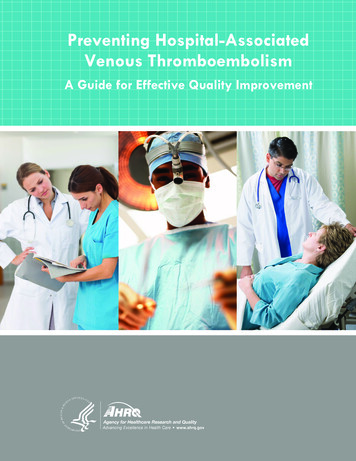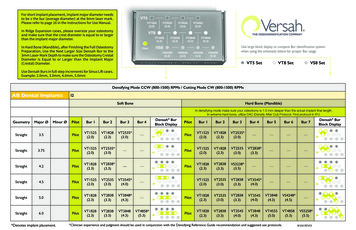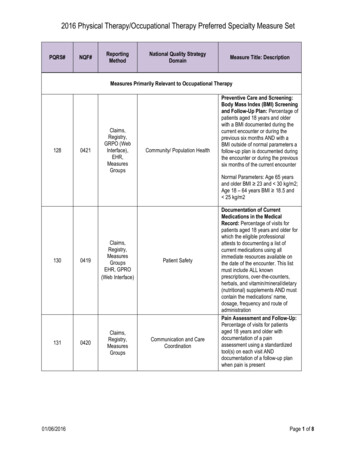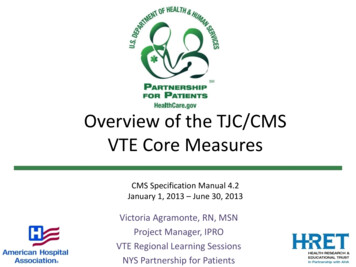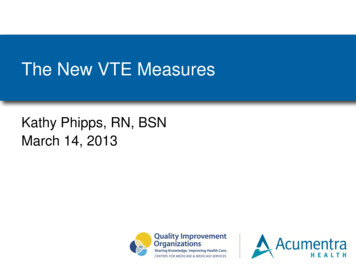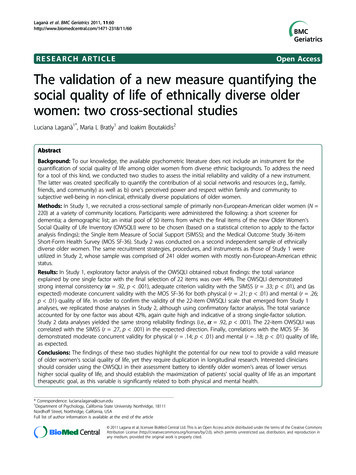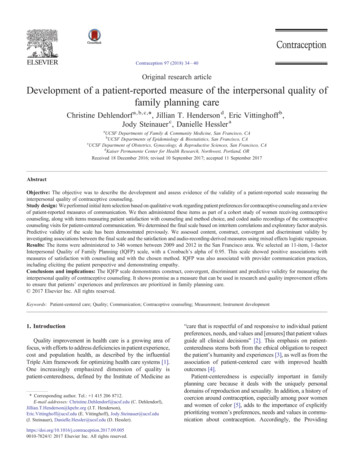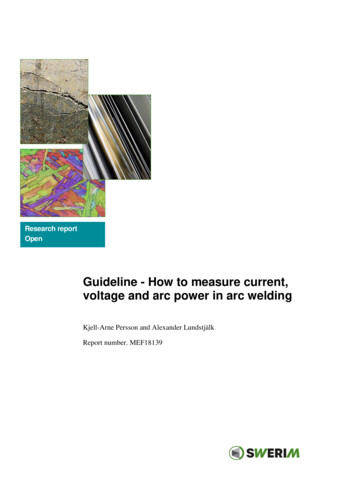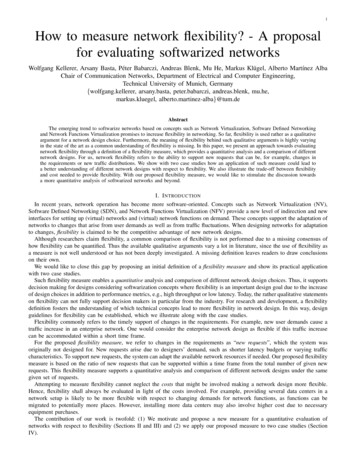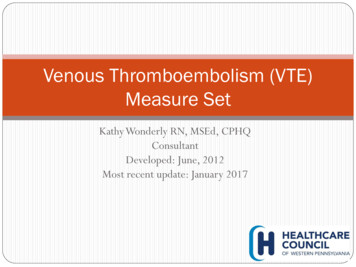
Transcription
Venous Thromboembolism (VTE)Measure SetKathy Wonderly RN, MSEd, CPHQConsultantDeveloped: June, 2012Most recent update: January 2017
Philosophy changes Both The Centers for Medicare and Medicaid Services (CMS)and The Joint Commission (TJC) have shifted the focus of theirquality programs from tracking the process of providingappropriate medical care to reporting the patient outcomes ofsuch care. To provide positive outcomes for patients, each facility mustfollow care plans or clinical pathways that are supported by themost current evidence based medicine. Review your facility’spatient care plans for preventing and treating VTE.
Hospital Acquired Potentially-PreventableVenous ThromboembolismMeasure # VTE-6
Objective To understand the importance of administering VTE prophylaxisordered to reduce the risk of preventable VTE amonghospitalized patients.
Preventable VTE Definition Preventable VTE is defined as objectively diagnosed DeepVein Thrombosis (DVT) or Pulmonary Emboli (PE) thatoccurred in a setting in which thromboprophylaxis wasindicated but was either administered inadequately or notadministered at all. (Arnold, D.M.)
Introduction Hospitalized patients at high risk for VTE may developasymptomatic deep vein thrombosis (DVT) orpulmonary embolism which may cause an unexpecteddeath before the diagnosis is even suspected.
The Desired Patient Outcome In the U.S., an estimated 350,000 to 900,000 individualsdevelop VTE each year and approximately 100,000 die fromthis condition (Rathbun, 2009). The goal of the CMS Hospital Improvement InnovationNetwork (HIIN) is to reduce the occurrence of these HAevents by 40%. To reach this goal every hospital must have a strong VTE riskassessment and prophylaxis program.
Incidence of potentially preventable VTE This measure in the VTE set is the identification ofthose patients who developed confirmed VTE duringhospitalization (not present on admission). It is imperative that every assessment finding bedocumented on admission (POA) so only those VTEoccurring after hospitalization are counted.
Prevention is the Goal To prevent such complications, the best approach is toassess each patient for VTE risk and administerprimary prophylaxis to reduce the chance fordeveloping either a DVT or PE.
Exceptions for the VTE measure set Patients with documentation by the practitioner ofreasons why prophylaxis was not ordered. Patients less than 18 years of age Patients with Comfort Measures Only documented on theday of or the first day after admission. Patients enrolled in clinical trials Patients with VTE present on admission Patients who have a length of stay greater than 120 days.
Test your Knowledge1. The first step in preventing a patient from developinga VTE is completing a thorough risk assessment onadmission.A. TrueB. False
Test your Knowledge2. It is not important to follow the VTE prophylaxisprotocol for hospitalized patients admitted to yourfacility.A. TrueB. False
References Arnold, D.M. (2001). Missed opportunities for prevention of venousthromboembolism: an evaluation of the use of thromboprophlaxis guidelines.Chest Dec;120(6) 1964-71. The Centers for Medicare & Medicaid Services Hospital ImprovementInnovation Network (HIIN) program. Rathbun, S. (2009). The surgeon general’s call to action toprevent deep vein thrombosis and pulmonary embolism.Circulation, 119(15), e480-e482. Retrieved fromhttp://www.ncbi.nlm.nih.gov/books/NBK44178/ Specification Manual for National Hospital Quality Measures 2016. Version 5.2a
The End
Exceptions for the VTE measure set Patients with documentation by the practitioner of reasons why prophylaxis was not ordered. Patients less than 18 years of age Patients with Comfort Measures Only documented on the day of or the first day after admission. Patients enrolled in clinical trials Patients with VTE present on admission Patients who have a length of stay greater than 120 days.File Size: 291KB
